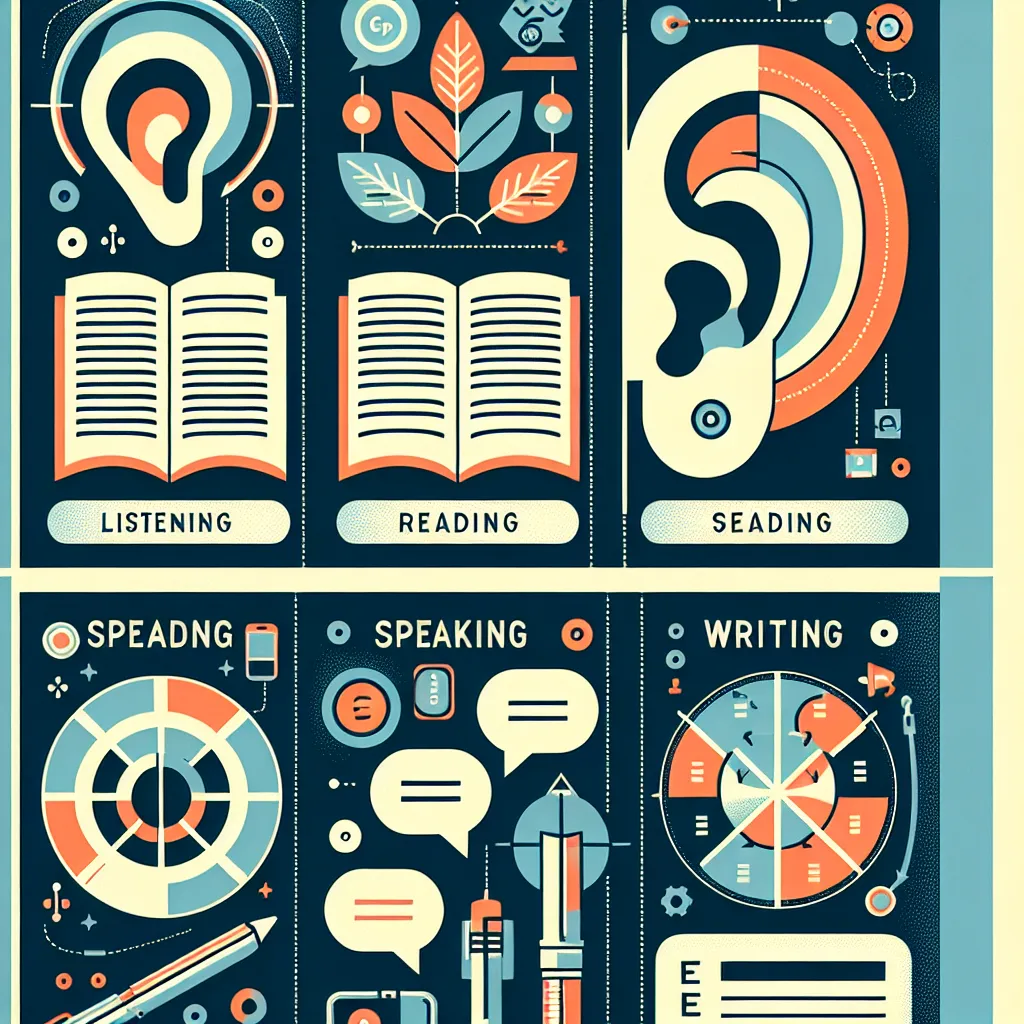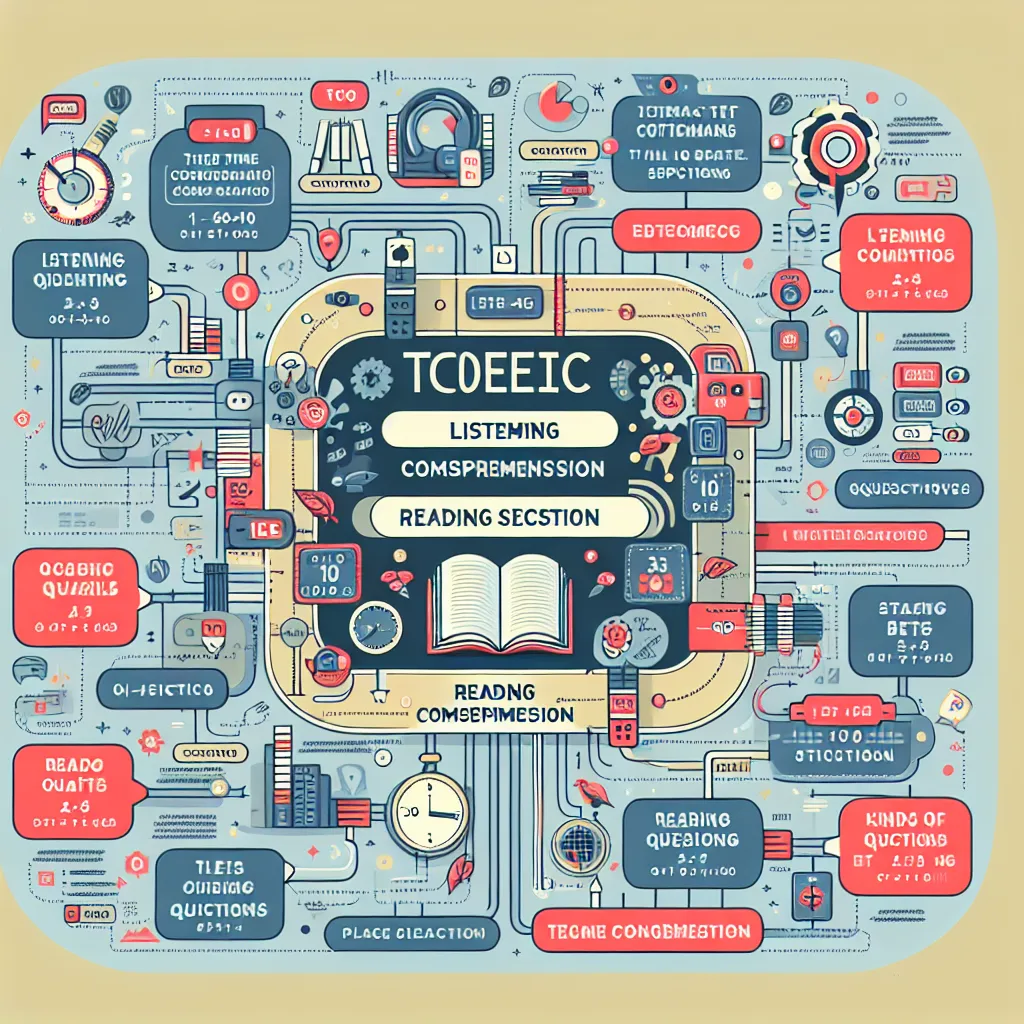The Test of English for International Communication (TOEIC) is a widely recognized assessment of English language proficiency for non-native speakers. Understanding the types of exercises in the TOEIC exam is crucial for effective preparation and success. This comprehensive guide will explore the various components of the TOEIC test, providing valuable insights for test-takers at all levels.
 TOEIC Exam Components
TOEIC Exam Components
Overview of TOEIC Exam Structure
The TOEIC exam consists of two main parts: the Listening and Reading Test, and the Speaking and Writing Test. Each part evaluates different aspects of English language skills, providing a comprehensive assessment of a candidate’s proficiency.
Listening and Reading Test
The Listening and Reading Test is the more commonly taken portion of the TOEIC exam. It is a paper-based test that takes approximately 2 hours to complete.
Listening Section (45 minutes)
The Listening section comprises 100 questions divided into four parts:
-
Photographs: 6 questions
- Test-takers hear four statements about a photograph and select the one that best describes the image.
-
Question-Response: 25 questions
- Candidates hear a question or statement followed by three responses and must choose the most appropriate one.
-
Short Conversations: 39 questions
- Test-takers listen to a dialogue between two speakers and answer questions based on the conversation.
-
Short Talks: 30 questions
- Candidates listen to a monologue or announcement and answer questions about the content.
Reading Section (75 minutes)
The Reading section consists of 100 questions divided into three parts:
-
Incomplete Sentences: 40 questions
- Test-takers must choose the word or phrase that best completes a sentence.
-
Text Completion: 12 questions
- Candidates fill in blanks in a short text by selecting the most appropriate words or phrases.
-
Reading Comprehension: 48 questions
- Test-takers read various texts, such as emails, articles, and advertisements, and answer questions about them.
Speaking and Writing Test
The Speaking and Writing Test is computer-based and evaluates productive language skills. This test is less commonly required but is gaining importance in many professional settings.
Speaking Section (20 minutes)
The Speaking section includes 11 questions across six tasks:
- Read a text aloud: 2 questions
- Describe a picture: 1 question
- Respond to questions: 3 questions
- Respond to questions using information provided: 3 questions
- Propose a solution: 1 question
- Express an opinion: 1 question
Writing Section (60 minutes)
The Writing section consists of 8 questions across three tasks:
- Write a sentence based on a picture: 5 questions
- Respond to a written request: 2 questions
- Write an opinion essay: 1 question
Key Strategies for TOEIC Exercises
Understanding the types of exercises is only the first step. To excel in the TOEIC exam, consider the following strategies:
Listening Section Tips
- Practice active listening: Focus on understanding the main idea and key details in conversations and monologues.
- Familiarize yourself with various accents: The TOEIC exam features speakers with different English accents.
- Improve note-taking skills: This is particularly useful for the Short Talks section.
Reading Section Strategies
- Enhance vocabulary: Focus on business and professional terminology.
- Practice speed reading: Time management is crucial in the Reading section.
- Develop skimming and scanning techniques: These skills help in quickly locating relevant information.
Speaking Section Advice
- Work on pronunciation and intonation: Clear speech is essential for high scores.
- Practice timed responses: Familiarize yourself with speaking under time constraints.
- Expand your ability to describe and explain: This is crucial for picture description and opinion tasks.
Writing Section Guidelines
- Improve grammar and sentence structure: Focus on writing clear, error-free sentences.
- Practice organizing ideas: Structured responses are key to high scores in essay writing.
- Enhance your typing speed: The test is computer-based, so typing efficiency is important.
Common Challenges and How to Overcome Them
Test-takers often face several challenges when preparing for the TOEIC exam:
- Time management: Practice with timed mock tests to improve your pacing.
- Unfamiliar vocabulary: Regularly read English business publications to expand your vocabulary.
- Listening comprehension: Watch English news broadcasts and podcasts to improve your listening skills.
- Speaking fluency: Engage in English conversations regularly, possibly with language exchange partners.
- Writing coherence: Practice writing essays on various topics and seek feedback from proficient English speakers.
Conclusion
The TOEIC exam encompasses a wide range of exercises designed to evaluate your English proficiency comprehensively. By understanding the types of exercises and implementing targeted strategies, you can significantly improve your performance. Remember, consistent practice and exposure to English in various contexts are key to achieving a high score on the TOEIC exam.
Are you preparing for the TOEIC exam? Share your experiences or questions in the comments below. For more in-depth guides on specific TOEIC sections or preparation strategies, check out our other articles on LearnEnglish.NET.
[internal_links]




